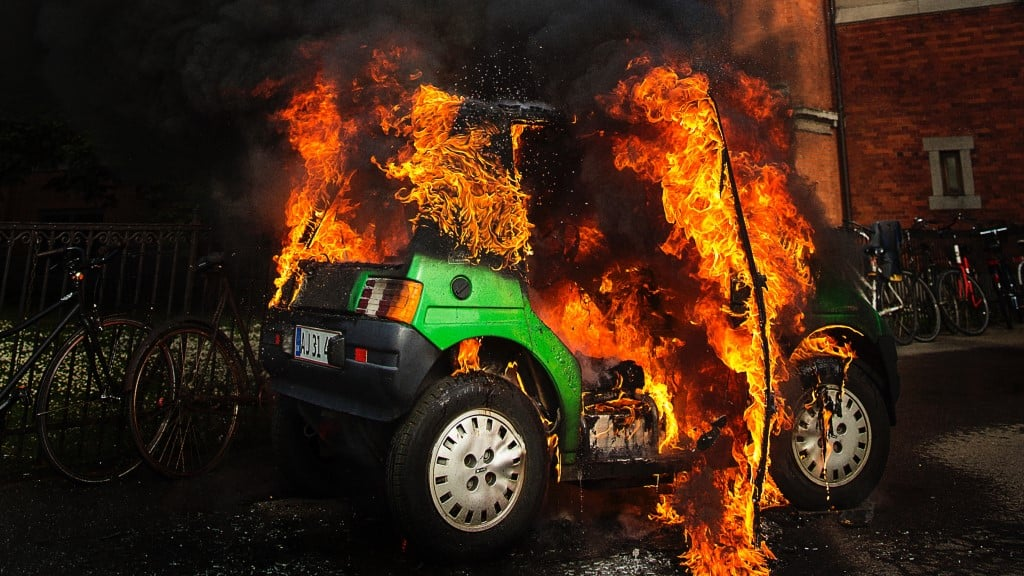The Rise of Electric Vehicle Fires: Addressing the Challenge with Safety Innovations. Electric vehicles (EVs) are hailed as the future of sustainable transportation, promising to reduce carbon emissions and combat climate change. However, as their popularity surges, a concerning issue has emerged: the increasing incidence of EV fires. While such events remain statistically rare, their high-profile nature and unique challenges have sparked discussions about safety measures and technological advancements.
The Nature of EV Fires
Unlike conventional gasoline vehicle fires, EV fires primarily stem from lithium-ion batteries. These batteries store a significant amount of energy in a compact space, making them efficient but also prone to thermal runaway—a chain reaction caused by overheating, internal short circuits, or physical damage. When thermal runaway occurs, the battery can release toxic gases, ignite, or even explode.
Recent high-profile cases of EV fires have raised alarms among consumers and manufacturers alike. Factors such as faulty manufacturing, improper maintenance, and extreme external conditions have been linked to these incidents.The Rise of Electric Vehicle Fires: Addressing the Challenge with Safety Innovations

Understanding the Risks
Experts emphasize that EV fires are not more frequent than fires in gasoline-powered vehicles. However, the nature of lithium-ion battery fires makes them more challenging to extinguish. Traditional firefighting methods may be less effective, as the batteries can reignite hours or even days after being seemingly extinguished.
Additionally, urban infrastructure, such as parking garages and charging stations, must adapt to accommodate the unique risks posed by EVs. For instance, tight spaces in parking lots can amplify the impact of a fire, necessitating advanced safety protocols.
Innovations Addressing the Issue
- Battery Management Systems (BMS):
Modern EVs are equipped with advanced BMS technology that monitors battery health, temperature, and performance in real time. These systems can predict and prevent potential issues by shutting down operations when abnormalities are detected. - Fire-Resistant Materials:
Manufacturers are developing battery enclosures using fire-resistant materials to contain flames and reduce the risk of external spread. These materials also enhance the overall structural integrity of the vehicle. - Improved Fire Suppression Systems:
Automakers are integrating built-in fire suppression systems that activate automatically in the event of a battery fire. These systems release inert gases or other fire-retardant agents to control the blaze. - Solid-State Batteries:
One of the most promising solutions is the development of solid-state batteries. Unlike lithium-ion batteries, solid-state batteries use solid electrolytes, which are less prone to overheating and combustion. While still in the research phase, these batteries could revolutionize EV safety. - Specialized Firefighting Training:
Fire departments worldwide are updating training programs and equipment to better handle EV fires. This includes using specialized tools and techniques to safely extinguish battery fires and prevent reignition.
Consumer and Industry Responsibilities
Consumers also play a critical role in mitigating EV fire risks. Proper maintenance, regular battery health checks, and following manufacturer guidelines for charging and storage are essential. Meanwhile, automakers and regulators must ensure transparency regarding safety features and incident reporting.
A Path Forward
As EV technology evolves, so too must our approach to safety. The automotive industry, governments, and researchers are investing heavily in innovations to address these challenges. While the rise of EV fires may seem alarming, it also represents an opportunity to refine and improve the technology that underpins a cleaner, greener future.
In the meantime, public awareness and proactive measures remain key to ensuring the continued growth of EV adoption without compromising safety.











